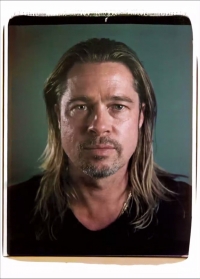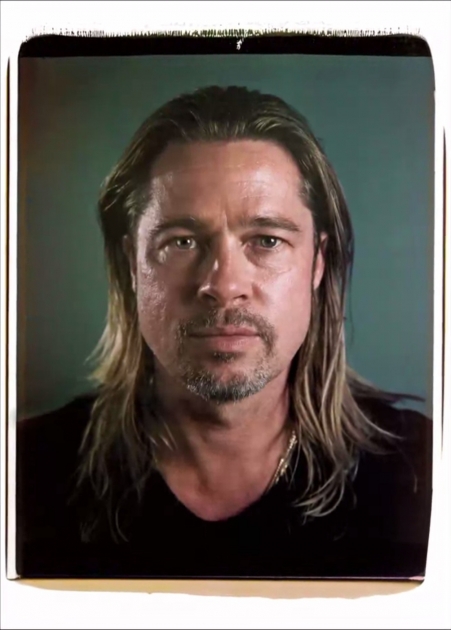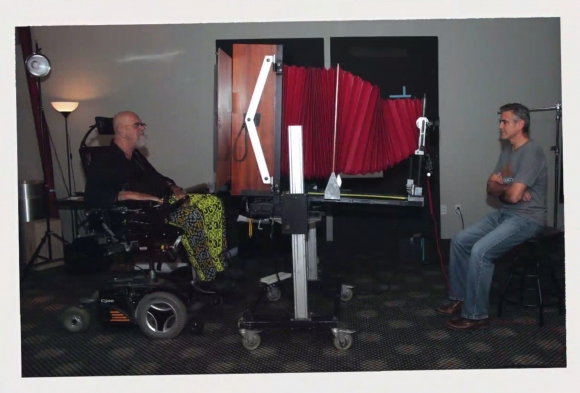For Vanity Fair’s 20th Hollywood issue, Chuck Close used a giant polaroid to take life-size portraits of movie stars
posted Thursday, February 27, 2014 at 4:30 PM EDT

Back in 1970, Polaroid created a unique instant camera that uses 20x24" instant film, and that can, when used from the right distance, yield life-size portraits. Now before we go into any details, just let that sink for a moment. 20x24" is even larger than most 'large format' film sizes, which typically go up to 8x10, and these days you have a hard time even finding 4x5" format film. And we're talking about 'regular' film, which, despite ever declining sales, is still more readily available than instant film.
Even back when the camera was first introduced, you couldn't just grab a pack of 20x24" instant film sheets at the drugstore around the corner, which is why Polaroid granted artists access to the camera and film supply for free, in exchange for some of the images they created. One of the first artists using the 20x24" Polaroid was Andy Warhol, and another one was Chuck Close. Just recently Close used the giant instant camera once again, for a series of portraits of Hollywood celebrities that he created for Vanity Fair's 20th Hollywood issue.

There are several reasons why Close chose the Polaroid for this project. One is that, in his own words, he's "not stealing anyone's image. After every shot, the picture goes up on the wall. I can look at it, and the sitter can look at it. They say, 'Oh, okay, this is what we're doing.'" Due to the instant nature of the film used, each picture can be inspected immediately, and the session can be continued as long as it takes until a result is achieve that both parties are happy with.
Another reason why he prefers film is its "honesty" over digital images that can be tampered with in post-production. This honesty is also the reason why for this series, Close asked his subjects to come without a full staff of hairdressers, make-up artists and other stylists, but rather pick a set of clothes, maybe bring along one other person they feel comfortable with, and then just be themselves throughout the session. Instead of taking glamour shots, Close wanted to create portraits that show the celebrities as naturally and unaltered as possible.

As for the camera, Close states that it's "the size of a Volkswagen, and you shove this baby right down their throat." Which goes to say, the subjects are very close to the huge camera, as you can see in the image above, while the photographer stays hidden on the other side "barking orders at them." With sessions often taking up to three hours, this is probably not an easy process for both photographer and subject, but the resulting pictures clearly demonstrate that Close found a way to make each celebrity feel comfortable and act as naturally as possible -- just being themselves rather than a stylized Hollywood figure.
Below you can find a behind-the-scenes video that shows how the series was created, and in which Close explains his motivation and technique. The full series will appear in the March 2014 issue of Vanity Fair.
Now with Polaroid being no longer, one might wonder who is taking care of the camera, and where the film supply is coming from. This would be 20x24 Studio in New York City, who bought not only the camera from Polaroid, but also all the machines needed to produce the film supply. Both camera and film can be rented on location in New York City, and if you'd like to learn more about the camera, the artists that use it and the pictures they create with it, you'll find all that and more on 20x24 Studio's website.
(via Design Taxi, Phaidon and Vanity Fair)